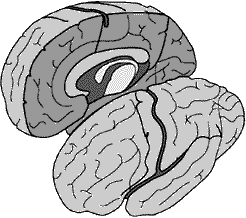The space
The first artificial satellite was launched October 4, 1957. And it wasn't American. The Soviet made Sputnik, weighing about 183 lbs., took about 98 minutes to orbit the Earth on its elliptical path, 500 miles up. Traveling at 18,000 miles an hour, Sputnik would "beep, beep, beep" it's telemetry as it passed over. The satellite transmitters operated for three weeks, until the on-board chemical batteries failed, and were monitored with intense interest around the world.
Other types of satelites are the GPS (Global Positioning System). The Global Positioning System, usually called GPS, is the only fully-functional satellite navigation system. A constellation of more than two dozen GPS satellites broadcasts precise timing signals by radio to GPS receivers, allowing them to accurately determine their location (longitude, latitude, and altitude) in any weather, day or night, anywhere on Earth.
GPS has become a vital global utility, indispensable for modern navigation on land, sea, and air around the world, as well as an important tool for map-making, and land surveying. GPS also provides an extremely precise time reference, required for telecommunications and some scientific research, including the study of earthquakes.
Military Applications
GPS allows accurate targeting of cruise missiles and precision-guided munitions (or "smart bombs"), as well as improved command and control of forces through improved locational awareness. GPS increases the accuracy of submarine launched ballistic missiles, since knowing the exact launching position allows for more accurate targeting of the missile. The satellites also carry nuclear detonation detectors, which form a major portion of the United States Nuclear Detonation Detection System. Commercial civilian GPS receivers are required to have limits on the velocities and altitudes at which they will report coordinates; this is to prevent them from being used to create improvised missiles.
Navigation
GPS is used by people around the world as a navigation aid in cars, airplanes, and ships. The system can also be used by computer controlled harvesters, mine trucks and other vehicles. Hand-held GPS receivers can be used by mountain climbers and hikers. Glider pilots use the logged signal to verify their arrival at turnpoints in competitions. ffe3rdLow cost GPS receivers are often combined in a bundle with a PDA, car computer, or vehicle tracking system.
Surveying
More costly and precise receivers are used by land surveyors to locate boundaries, structures, and survey markers, and for road construction.
GPS on airplanes
Most airlines allow private use of ordinary GPS units on their flights, except during landing and take-off, like all other electronic devices. Additionally, some airline companies disallow use of hand-held receivers for security reasons, such as unwillingness to let ordinary passengers track the flight route. On the other extreme, some airlines integrate GPS tracking of the aircraft into their aircraft's seat-back television entertainment systems, available even during takeoff and landing to all passengers


















